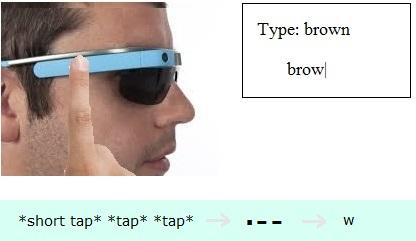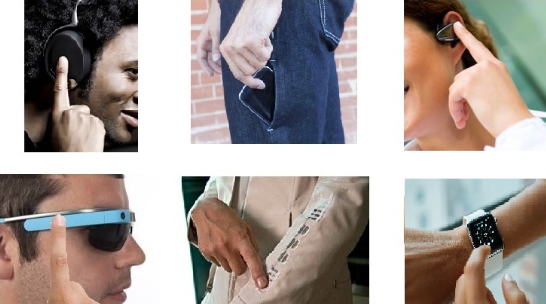‘Passive haptic learning’ (PHL) system teaches Morse code without trying
November 3, 2016

Study participants learned to tap Morse code into Google Glass after four hours (credit: Georgia Tech/Caitlyn Seim)
Researchers at the Georgia Institute of Technology have developed a “passive haptic learning” (PHL) system that teaches people Morse code within four hours, using a series of vibrations felt near the ear. Participants wearing Google Glass learned it without paying attention to the signals —they played games while feeling the taps and hearing the corresponding letters.
They were 94 percent accurate keying a sentence that included every letter of the alphabet and 98 percent accurate writing codes for every letter.
Georgia Tech researchers used this same method to teach people braille, how to play the piano and improved hand sensation for those with partial spinal cord injury.
The team used Glass for this study because it has both a built-in speaker and tapper (a bone-conduction transducer).
Unconscious learning
In the study, participants played a game while feeling vibration taps between their temple and ear. The taps represented the dots and dashes of Morse code and passively “taught” users through their tactile senses — even while they were distracted by the game.
The taps were created when researchers sent a very low-frequency signal to Glass’s speaker system. At less than 15 Hz, the signal was below hearing range but, because it was played very slowly, the sound was felt as a vibration.
Half of the participants in the study felt the vibration taps and heads a voice prompt for each corresponding letter. The other half — the control group — felt no taps to help them learn.
Participants were tested throughout the study on their knowledge of Morse code and their ability to type it. After less than four hours of feeling every letter, everyone was challenged to type the alphabet in Morse code in a final test.

The findings demonstrate silent, eyes-free text entry on a mobile device without a keyboard (participants touched on Glass’s touchpad to enter Morse code during quizzes), but the system could be adapted to allow other mobile or wearable devices to be used (credit: Georgia Tech/Caitlyn Seim)
The control group was accurate only half the time. Those who felt the passive cues were nearly perfect.
The method “shows that PHL lowers the barrier to learn text-entry methods — something we need for smartwatches and any text-entry that doesn’t require you to look at your device or keyboard,” said Georgia Tech Professor Thad Starner.
“This research also shows that other common devices with an actuator could be used for passive haptic learning,” he says. “Your smartwatch, Bluetooth headset, fitness tracker or phone.”
The researchers’ next study will go a step further, investigating whether PHL can teach people how to type on a QWERTY keyboard.
The work is supported in part by the National Science Foundation.
Abstract of Tactile taps teach rhythmic text entry: passive haptic learning of morse code
Passive Haptic Learning (PHL) is the acquisition of sensorimotor skills with little or no active attention to learning. This technique is facilitated by wearable computing, and applications are diverse. However, it is not known whether rhythm-based information can be conveyed passively. In a 12 participant study, we investigate whether Morse code, a rhythmbased text entry system, can be learned through PHL using the bone conduction transducer on Google Glass. After four hours of exposure to passive stimuli while focusing their attention on a distraction task, PHL participants achieved a 94% accuracy rate keying a pangram (a phrase with all the letters of the alphabet) using Morse code on Glass’s trackpad versus 53% for the control group. Most PHL participants achieved 100% accuracy before the end of the study. In written tests, PHL participants could write the codes for each letter of the alphabet with 98% accuracy versus 59% for control. When perceiving Morse code, PHL participants also performed significantly better than control: 83% versus 46% accuracy.